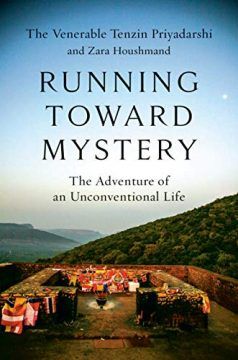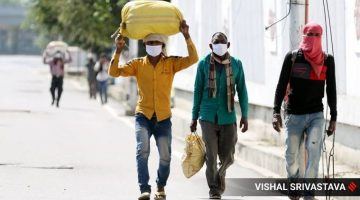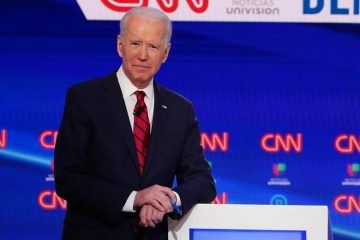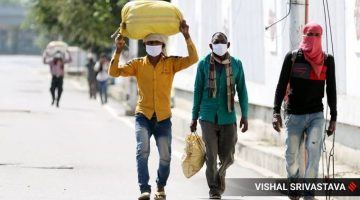The Mostly Everything That Everyone Is
—for BIH
My younger brother, a dutiful brave person, spends his work life studying
………. the chestnut fungus Cryphonectria parasitica so American chestnut trees
………. will not entirely vanish;
i’m especially glad for his work when i’m trying to get the skins off the brain-
………. shaped nuts with their curly, dented integuments.
He was the cheerful child in the family, less seized than his siblings by the idea
………. that to please our parents even somewhat we had to be almost or
………. completely perfect at each task.
It seems his studied fungus makes cankers of two types: either they swell or sink.
………. If sinking cankers, the wound kills the tree; it “knows” at its wound level
………. what a life force is. Some genes that hurt the fungus help the tree. If the tree
………. dies, the disease has become visible or it is visible because it dies.
Most of life’s processes are repeatable—at first i wrote “all of life’s” but that’s so
………. not true. Nerve-like structures fall from clouds only once. A shorter dawn
………. sets in before the main dawn. Millions rise & go faithfully to work,
………. taking their resolve, each person clears one throat, music is note by note,
my brother gets our elderly mother up, others in his family rise, he goes to his job
………. free of self pity, the suppressed cheer of his childhood transferred
to his lab mates who monitor the tiny lives growing without human stress, hate,
………. intention or cruelty but also without artful song so they dazzle no one.
My brother and i are as close as the skin on a chestnut is to the chestnut, as close
………. as bark of the tree to its uses. When our mother was sad she shut herself
………. in her room, & when she felt better she’d come out. You have to slough
………. some things off, she’d say, loving us with decades of feral intensity.
He goes along, days pass through the mostly everything that everyone is, a sense
………. of continuance is pulled from nothing, something produced when it can’t
………. stand being nothing, love in the experiments, numbers in the mystery,
………. the healing of the wound, Psyche sorting seeds like minutes, a wound
………. clinging to the tree, sometimes its fruit is food, sometimes the tree
………. is nearly perfectly waiting
by Brenda Hillman
from Emergence Magazine

 For the same reason as large parts of the world, I spend even more time indoors these days than I already would. One thing I have been doing is rereading the Harry Potter books – or paying Stephen Fry to read them to me.
For the same reason as large parts of the world, I spend even more time indoors these days than I already would. One thing I have been doing is rereading the Harry Potter books – or paying Stephen Fry to read them to me.
 In the memoir, Running Toward Mystery: The Adventure of an Unconventional Life, the Venerable Tenzin Priyadarshi chooses to become a monk at the peak of his youthful potential. He rejects the spiritual path as a mere life enhancer and encourages readers to embark on a more totalizing journey of self-actualization. By embracing mystery, as opposed to cultural explanations, we can arrive at deeper questions. This wish bookends this carefully written memoir, which is co-authored by Zara Houshmand. Despite an already crowded landscape of books depicting religious quests and spiritual advice- both classics and new works – this book is bound to be widely read if for no other reason than Priyadarshi’s current role as a thought leader while serving as the first Buddhist chaplain at Massachusetts Institute of Technology (MIT).
In the memoir, Running Toward Mystery: The Adventure of an Unconventional Life, the Venerable Tenzin Priyadarshi chooses to become a monk at the peak of his youthful potential. He rejects the spiritual path as a mere life enhancer and encourages readers to embark on a more totalizing journey of self-actualization. By embracing mystery, as opposed to cultural explanations, we can arrive at deeper questions. This wish bookends this carefully written memoir, which is co-authored by Zara Houshmand. Despite an already crowded landscape of books depicting religious quests and spiritual advice- both classics and new works – this book is bound to be widely read if for no other reason than Priyadarshi’s current role as a thought leader while serving as the first Buddhist chaplain at Massachusetts Institute of Technology (MIT).

 What books are on your nightstand?
What books are on your nightstand? We have reason to take pride in the fact that India is the largest democracy in the world, and also the oldest in the developing world. Aside from giving everyone a voice, democracy provides many practical benefits for us. We can, however, ask whether we are making good use of it now when the country, facing a gigantic health crisis, needs it most.
We have reason to take pride in the fact that India is the largest democracy in the world, and also the oldest in the developing world. Aside from giving everyone a voice, democracy provides many practical benefits for us. We can, however, ask whether we are making good use of it now when the country, facing a gigantic health crisis, needs it most. The Wisconsin primary had to be the end for Bernie Sanders. The logic of it was inexorable. Here was the definitive Trump 2016 state, where as dozens of diner-safari retrospective stories told us, an alienated electorate had failed to rally to Hillary Clinton, tilting the national map ever so slightly but decisively into the red. The dream of the Sanders revolution was the dream of rousing those Wisconsin voters to his side, to energize a new coalition of the young and poor and hopeful in the name of a better democratic future. When that didn’t happen, it was time for Sanders to go. It was essentially impossible, as Sanders said in his live-streamed concession speech, for him to overcome Joe Biden’s lead in the delegate count.
The Wisconsin primary had to be the end for Bernie Sanders. The logic of it was inexorable. Here was the definitive Trump 2016 state, where as dozens of diner-safari retrospective stories told us, an alienated electorate had failed to rally to Hillary Clinton, tilting the national map ever so slightly but decisively into the red. The dream of the Sanders revolution was the dream of rousing those Wisconsin voters to his side, to energize a new coalition of the young and poor and hopeful in the name of a better democratic future. When that didn’t happen, it was time for Sanders to go. It was essentially impossible, as Sanders said in his live-streamed concession speech, for him to overcome Joe Biden’s lead in the delegate count. “
“
 Sam Anderson in the New York Times Magazine:
Sam Anderson in the New York Times Magazine: Amartya Sen in The Indian Express:
Amartya Sen in The Indian Express: